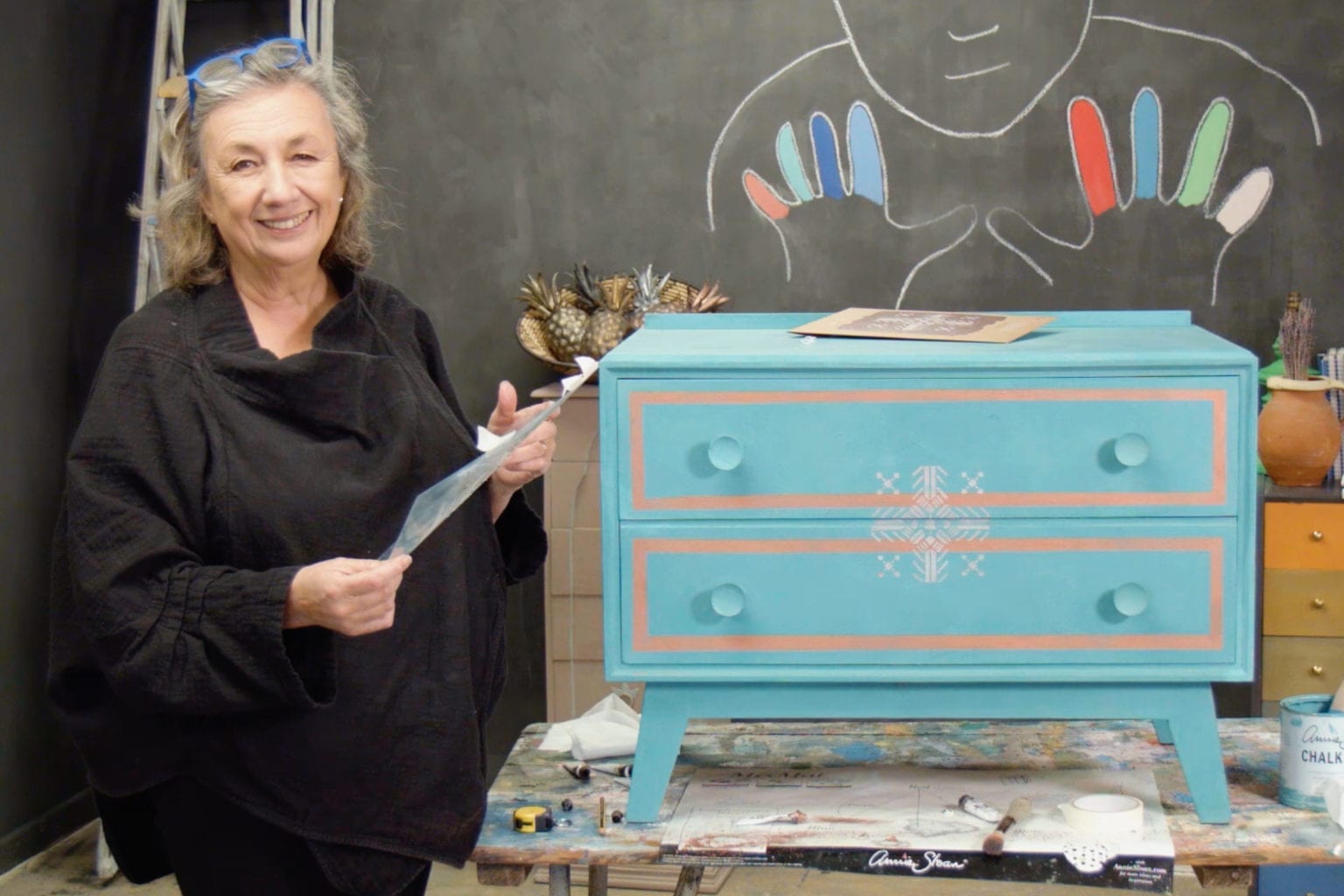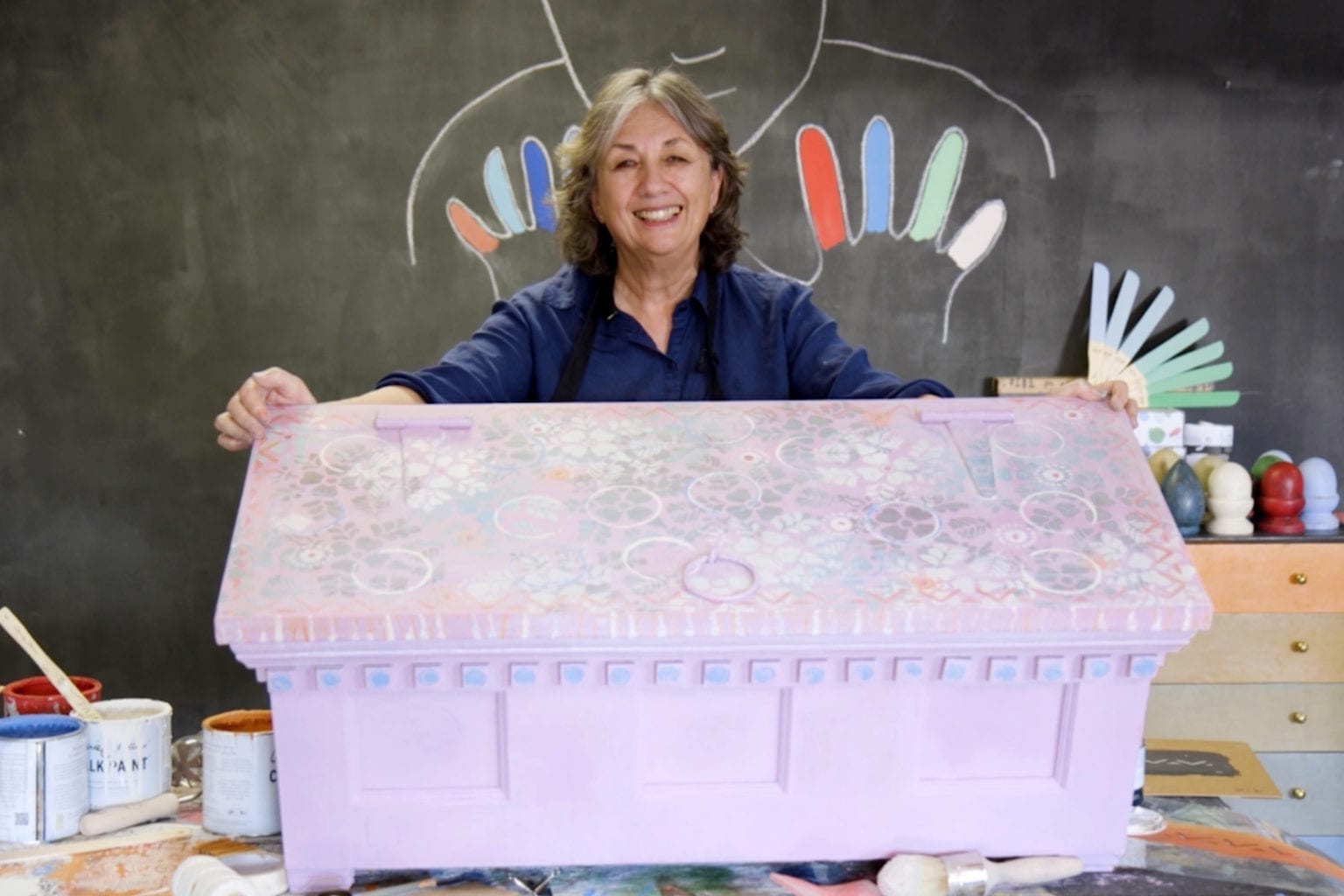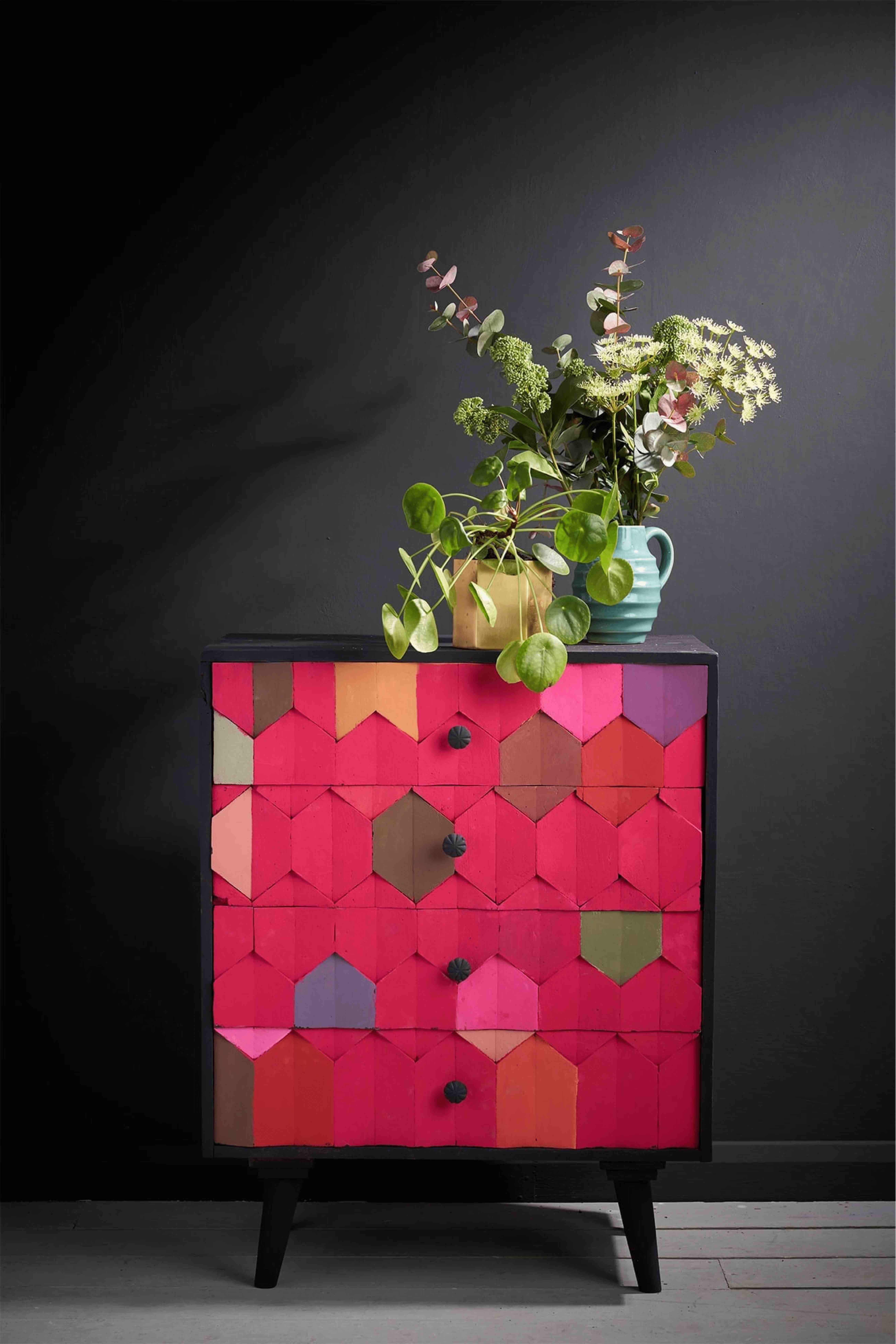Sometimes a matt finish simply won’t do. Perhaps you want to bring out some detailed carvings or simply want to add a little shine and glamour to your project. Creating a shimmering finish over Chalk Paint® couldn’t be simpler. All you need is a tin of Pearlescent Glaze and a sponge roller.
In this tutorial, Annie Sloan will teach you everything you need to know to add an iridescent finish to your Chalk Paint® project. Whether you’re working on a small decorative piece like a picture frame or something larger. As well as simply applying the glaze over your painted surface, you can learn how to mix Pearlescent Glaze with Chalk Paint® to create your own unique opalescent colour. With its light-reflecting properties, this water-based glaze shimmers even when dry.
Step by step guide to using Pearlescent Glaze
- Start by painting your piece with Chalk Paint® in the colour of your choice.
- Once the paint is dry, you’re ready to apply a coat of Pearlescent Glaze. Mix the glaze well before starting and apply with a Sponge Roller – this will help create a smooth finish.
- Allow to dry before applying a second coat of glaze.
- If your paintwork is completely covered with Pearlescent Glaze, your piece will be ready to go out on display as soon as it’s dry.
- If your project will include areas not covered with Pearlescent Glaze, your paintwork will still need protection. Apply a layer of Chalk Paint® Lacquer after painting and before applying the glaze.
Tips for using Pearlescent Glaze
- The Pearlescent Glaze looks white but is in fact translucent, meaning it is will change appearance according to the colour beneath it.
- You can also tint Pearlescent Glaze with Chalk Paint®. This will create a whole range of beautiful, shimmering pastels. Work with brighter, stronger Chalk Paint® colours and only add the smallest amount of paint – the pigment particles in the paint will dull the shimmering effects of the Pearlescent Glaze, so be economical! Have fun with experimenting with different colours using an Annie Sloan MixMat.
- If you prefer Chalk Paint® Wax to Lacquer, apply this over the Pearlescent Glaze. The wax will take away some of the iridescence and create a slightly duller finish. By gently removing the wax from the glazed areas, you can bring back some of that lovely shimmer.
- Pearlescent Glaze is only suitable for indoor use. If using in high traffic areas such as kitchens or floors, finish with a final coat of Chalk Paint® Lacquer for added protection.
- For lots more tips, take a look at our Pearlescent Glaze Fact Sheet.
Now you know how to use Pearlescent Glaze, you can have fun experimenting with lots of different Chalk Paint® colours to create the perfect, shimmering finish for your space. Pearlescent Glaze is a great way to create a high-end lustrous finish, whether you’re applying it directly over your paintwork or mixing your own iridescent pastels from scratch. Ready to try this out for yourself? Remember to support local by buying Pearlescent Glaze from your local Annie Sloan Stockist. When you’re done, take a picture of your finished project and share it with the Annie Sloan community using #AnnieSloan.



